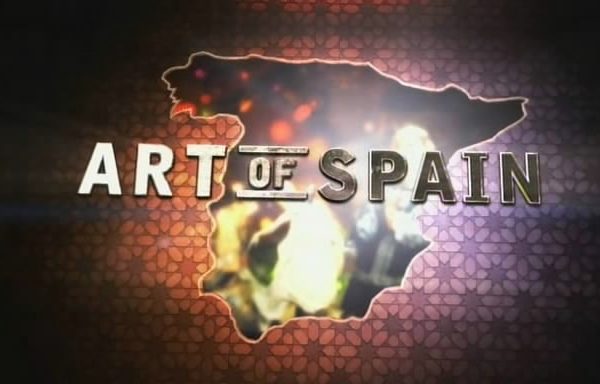The High Art of the Low Countries episode 1: Andrew Graham-Dixon shows how the art of Renaissance Flanders evolved from the craft of precious tapestries within the Duchy of Burgundy into a leading painting school in its own right. Starting his journey at the magnificent altarpiece of Ghent Cathedral created by the Van Eyck brothers, Andrew explains their groundbreaking innovation in oil painting and marvels at how the colours they obtained can still remain so vibrant today.
Andrew describes how, in the early Renaissance, the most urgent preoccupation was not the advancement of learning, humanist or otherwise, but the Last Judgment. People believed they were living in the end of days; a subject popular with preachers and artists and intensely realised in swarming microscopic detail by Hieronymus Bosch.
The High Art of the Low Countries episode 1
The Renaissance in the Low Countries was a cultural period in the Northern Renaissance that took place in around the 16th century in the Low Countries (corresponding to modern-day Belgium, the Netherlands and French Flanders).
Culture in the Low Countries at the end of the 15th century was influenced by the Italian Renaissance, through trade via Bruges, which made Flanders wealthy. Its nobles commissioned artists who became known across Europe. In science, the anatomist Andreas Vesalius led the way; in cartography, Gerardus Mercator’s map assisted explorers and navigators. In art, Dutch and Flemish Renaissance painting went from the strange work of Hieronymus Bosch to the everyday life of Pieter Brueghel the Elder. In architecture, music and literature too, the culture of the Low Countries moved into the Renaissance style.
Trade in the port of Bruges and the textile industry, mostly in Ghent, turned Flanders into the wealthiest part of Northern Europe at the end of the 15th century. The Burgundian court dwelled mostly in Bruges, Ghent and Brussels. The nobles and rich traders were able to commission artists, creating a class of highly skilled painters and musicians who were admired and requested around the continent.
This led to frequent exchanges between the Low Countries and Northern Italy. Examples are Italian architects Tommaso Vincidor and Alessandro Pasqualini, who worked in the Low Countries for most of their careers, Flemish painter Jan Gossaert, whose visit to Italy in 1508 in the company of Philip of Burgundy left a deep impression, musician Adrian Willaert who made Venice into the most important musical centre of its time and Giambologna, a Flemish sculptor who spent his most productive years in Florence.
Before 1500, the Italian Renaissance had little or no influence above the Alps. After this we begin to see Renaissance influences, but unlike the Italian Renaissance, Gothic elements remain important. The revival of the classical period is also not a central theme like in Italy, the “rebirth” shows itself more as a return to nature and earthly beauty.
Andrew Graham-Dixon
Andrew Michael Graham-Dixon (born 26 December 1960) is a British art historian and broadcaster. Graham-Dixon began work as a reviewer for the weekly Sunday Correspondent, before becoming the chief art critic of The Independent newspaper where he remained until 1998. Early in his career (in 1987, 1988 and 1989) he won the Arts Journalist of the Year Award three years in a row. As of 2005 he is the chief art critic of The Sunday Telegraph. Since 2004, he has also been a contributor to the BBC Two’s The Culture Show on a variety of subjects, and is often the main presenter of the programme.
In 1992, Graham-Dixon won the first prize in the Reportage section in the Montreal World Film Festival for a documentary film about Théodore Géricault’s painting The Raft of the Medusa. He has since gone on to present many BBC documentary series on art, including A History of British Art (1996), Renaissance (1999), Caravaggio (2002) The Secret of Drawing (2005), The Battle for British Art (2007), Art of Eternity (2007), Art of Spain (2008), The Art of Russia (2009), Art of Germany (2010), Art of America (2011), British Art at War: Bomberg, Sickert and Nash (2014), Art of China (2014) and Art of France (2017). He is passionate about the Mona Lisa, appearing in the popular BBC documentary Secrets of the Mona Lisa (2015).




